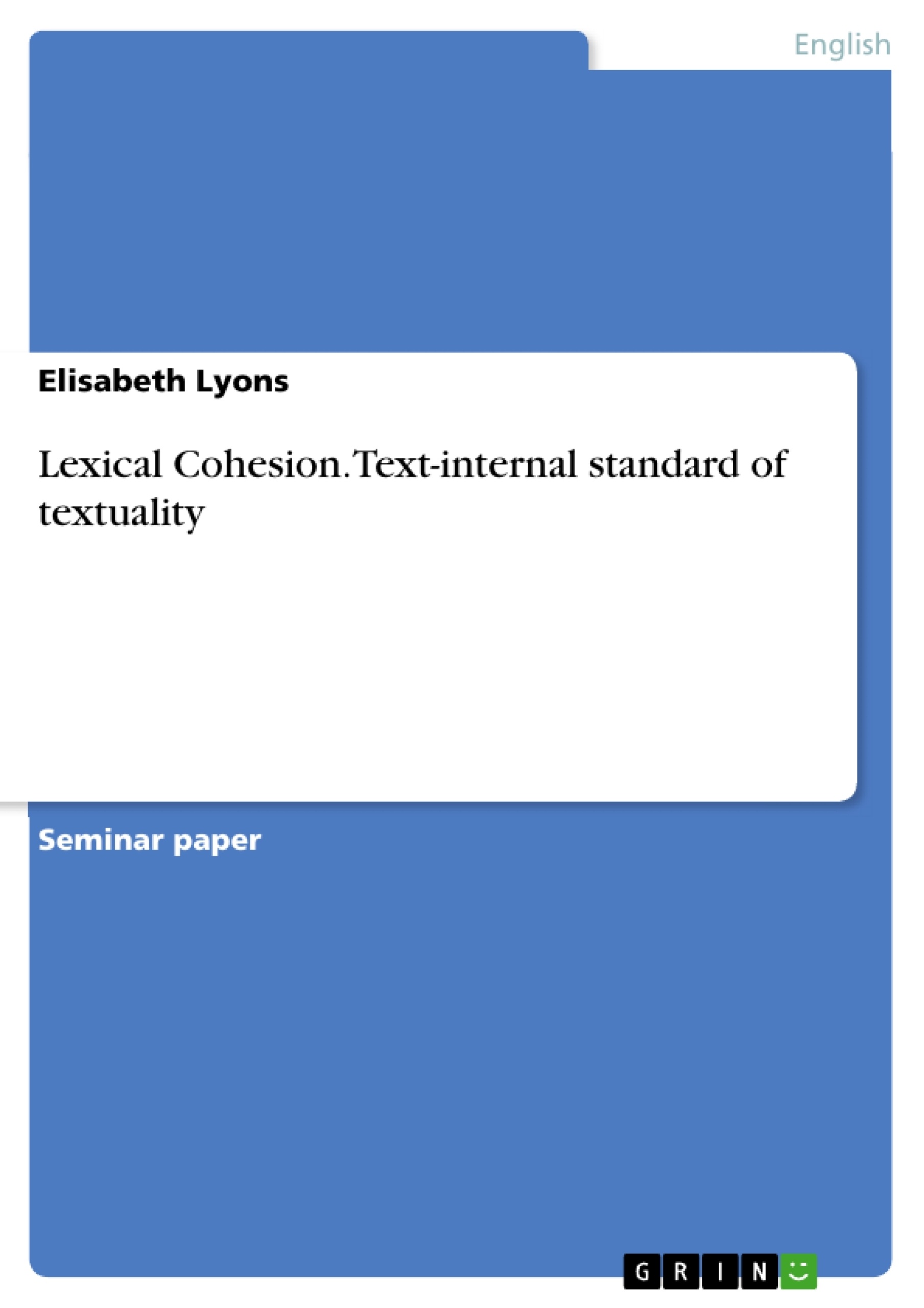Cohesion is, such as coherence, a text-internal standard of textuality . Therefore, it is not a user-centred but a text-centred notion. According to de Beaugrande/Dressler, cohesion “concerns the ways in which the components of the SURFACE TEXT, i.e. the actual words we hear or see, are mutually connected within a sequence” (1981, 3). Halliday/Hasan in turn underline that cohesion is based on semantic relations within a text (1976, 4). From these explanations we learn that cohesion is about how spoken or written words are linked to each other, and that cohesive ties are the devices that hold a text together. These cohesive ties can be distinguished on a grammatical as well as on a lexical level.
Table of Contents
- 2. Cohesion
- 2.1. Lexical cohesion vs. grammatical cohesion.
- 3. Types of lexical cohesion
- 3.1. Repetition
- 3.2. Sense relations
- 3.3. Paraphrase
- 3.4. Collocation
- 4. Conclusion
Objectives and Key Themes
This paper provides a general overview of the types of lexical cohesion in the English language. It explains the concept of cohesion and differentiates between grammatical and lexical cohesion. The primary focus is on lexical cohesion and its various types, illustrated through definitions, explanations, and examples.
- Understanding the concept of lexical cohesion and its role in textuality
- Exploring different types of lexical cohesion, including repetition, sense relations, paraphrase, and collocation
- Demonstrating how lexical cohesion contributes to text unity and coherence
- Providing a comprehensive overview of lexical cohesion within the framework of Schubert's classification
Chapter Summaries
- 2. Cohesion: This chapter introduces the concept of cohesion as a text-internal standard of textuality, highlighting its role in creating a cohesive and unified text. The chapter distinguishes between grammatical and lexical cohesion, emphasizing the importance of lexical knowledge in establishing cohesive ties.
- 2.1. Lexical cohesion vs. grammatical cohesion: This section further elaborates on the difference between grammatical and lexical cohesion. Grammatical cohesion focuses on structural relationships within a text, while lexical cohesion examines the connections between individual words and phrases.
- 3. Types of lexical cohesion: This chapter delves into the classification of lexical cohesion, presenting four main categories: repetition, sense relations, paraphrase, and collocation. Each category is further subdivided to provide a detailed analysis of the various types of lexical cohesion.
- 3.1. Repetition: This section focuses on repetition as a prevalent type of lexical cohesion, highlighting its role in reiteration and reinforcing key concepts within a text.
Keywords
Lexical cohesion, grammatical cohesion, textuality, repetition, sense relations, synonymy, antonymy, hyponymy, meronymy, paraphrase, collocation, coherence, text unity, lexical items, vocabulary choice.
- Citation du texte
- Elisabeth Lyons (Auteur), 2015, Lexical Cohesion. Text-internal standard of textuality, Munich, GRIN Verlag, https://www.grin.com/document/496702



